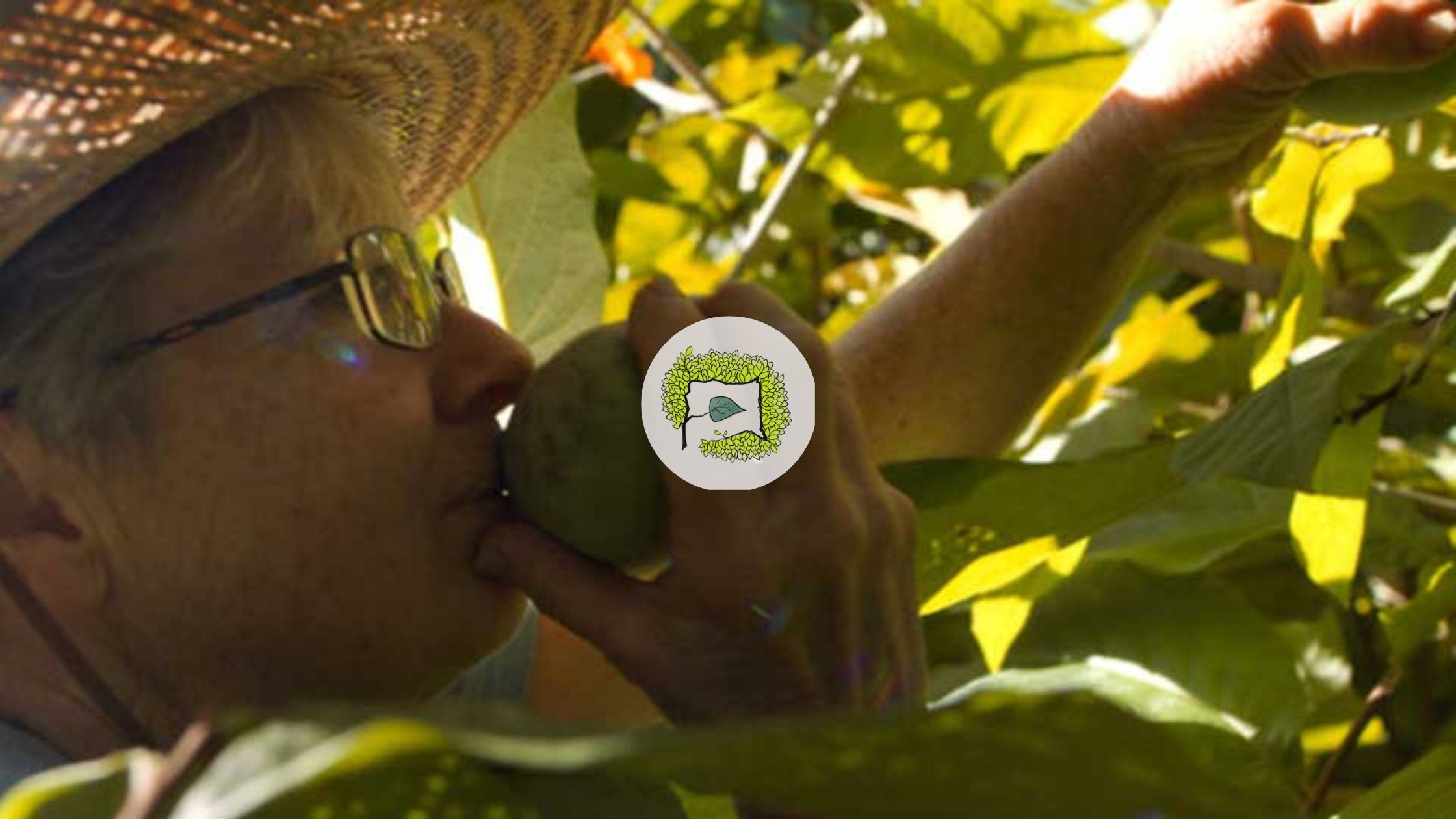Agroforestry is, in a nutshell, farming with trees. But agroforestry, which is considered one of the earliest forms of agriculture and has been practiced by indigenous peoples around the world for generations, can take many forms. A renewed interest in agroforestry comes from the opportunity it presents to turn farmers into climate heroes, sequestering carbon on working farmland while keeping it productive and profitable.
Kathy Dice and Tom Wahl have been experimenting with agroforestry on their farmland in southeastern Iowa for over 20 years, and they have emerged as leaders and mentors to a new generation of farmers who are looking to adopt a more resilient kind of agriculture. With over seventy different species of fruit and nut crops on their farm, Red Fern Farm stands in stark contrast to the majority of Iowa farmland: millions of acres of corn and soybean monocultures. “We’re trying to mimic the biodiversity you would see in nature,” says Kathy.
Red Fern Farm represents a hyper-diverse, integrated agroforestry operation, but other forms of modern agroforestry can also produce substantial benefits with more simplified practices. Alley cropping is the practice of planting trees in widely-spaced rows, with crops like corn or soybeans grown in between the rows until the trees reach maturity. Silvopasture utilizes the principles of managed grazing to pasture livestock beneath stands of trees without harming the trees or the soil. Forest farming is a term used to describe the cultivation of a wide variety of valuable plants and mushrooms that grow best in a forest environment.
“With agroforestry, we can grow trees and produce food for people by working with nature.” Kathy Dice, Red Fern Farm
The potential for agroforestry as a tool for both climate resilience and climate mitigation is significant. Agroforestry could sequester nearly 6 gigatons of carbon per year globally, more than any other management method for agricultural land (Roe et al 2022). That is the equivalent of 50 billion barrels of oil. Project Drawdown ranks silvopasture ninth in its list of climate solutions – higher than rooftop solar power, electric vehicles, and geothermal energy – with additional agroforestry methods ranking in the top twenty. In the US, agroforestry has the potential to remove at least 156 million metric tons of carbon dioxide a year from the atmosphere, the equivalent of shutting 39 coal-fired power plants.
The Savanna Institute, a nonprofit organization created in 2013 to catalyze agroforestry in the US Midwest, has been working to expand agroforestry adoption through partnerships with experienced farmers like Kathy Dice and Tom Wahl. Red Fern Farm has been featured in the Savanna Institute’s Pioneer Agroforestry Farm Tour Series and online agroforestry courses. Kathy and Tom have served as mentors in Savanna Institute’s Agroforestry Apprenticeship, and presented at the organization’s yearly Perennial Farm Gathering, which brings together hundreds of agroforestry experts and enthusiasts from across the Midwest and beyond. In addition to Tom and Kathy, Savanna Institute shares the stories of other Midwestern farmers who have adopted agroforestry through Landowner spotlights and video series.
Through partnerships with farmers, researchers, and other collaborators, the Savanna Institute seeks to overcome barriers to agroforestry that cannot be addressed by farmers individually. Land access and tenure present significant challenges for aspiring agroforesters, since many agroforestry crops do not become profitable for 5-10 years, and are not worth investing in if land access might be lost. Investment mechanisms to support beginning perennial farmers is a key need. By developing markets for key crops, and breeding improved varieties, the Savanna Institute is working to make agroforestry work for more farms. Through a network of on-the-ground demonstration farms, the Savanna Institute is also working, like Tom and Kathy, to stir people’s imaginations with living examples of what agroforestry can look like.
“We made all the mistakes – every last one of them,” Tom Wahl says of his time on the farm. His statement could just as easily describe humanity’s response to the climate crisis. And yet, Kathy and Tom have persevered.
With agroforestry, they have hope for the future.
—
Red Fern Farm is a family-owned nursery and farm in southeastern Iowa owned and operated by Kathy Dice and Tom Wahl. It is also the site of ongoing research on a variety of tree crops.
Editor’s note: This post was originally published in the US Nature 4 Climate series and is re-published with the permission of The Nature Conservancy.

